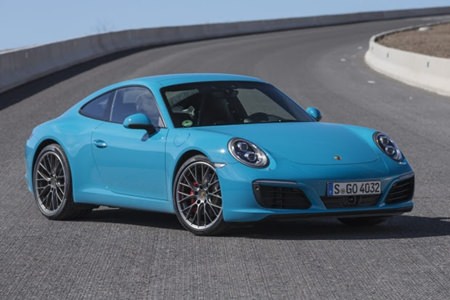After many years of naturally-aspirated power Porsche has returned to turbocharging with the latest 911 Carrera and its more sporting Carrera S sibling with even greater reserves along with vastly better fuel economy than ever before.
At 3.0 liters, the new six-cylinder has a smaller capacity than the naturally-aspirated 3.4 liter and 3.8 liter engines it replaces. This new engine has twin fixed vane turbochargers (like the RUF Porsches of decades ago). Power and torque are both increased, with the basic 911 running a nominal 0.9 bar of boost pressure in the rear-mounted powerplant which delivers 272 kW of power and 450 Nm of torque. With 1.2 bar of boost pressure, in the 911 Carrera S produces 309 kW and 500 Nm of torque.
 New 911.
New 911.
Torque comes in at 1700 rpm compared to the 5600 rpm of the old engine, leading to a promise of improved flexibility.
Transmission is either a seven speed manual gearbox or an optional seven speed dual clutch gearbox, along with either standard rear wheel drive or optional four wheel drive in respective Carrera 4 and Carrera 4S models.
When fitted with an optional Sports Chrono Package, the new 911 Carrera and Carrera S also now offer five different driving modes: Normal, Sport, Sport Plus, Individual and Sport Response – the latter available exclusively in combination with the optional seven speed dual clutch gearbox.
Although the new Carrera S is 45 kg heavier than the old model, at 1460 kg with the optional dual-clutch ‘box, Porsche claims the car is 0.2 sec faster from 0 to 100 km/h, with a time of 3.9 seconds. Top speed is also 4 km/h more to a new maximum of 306 km/h.




